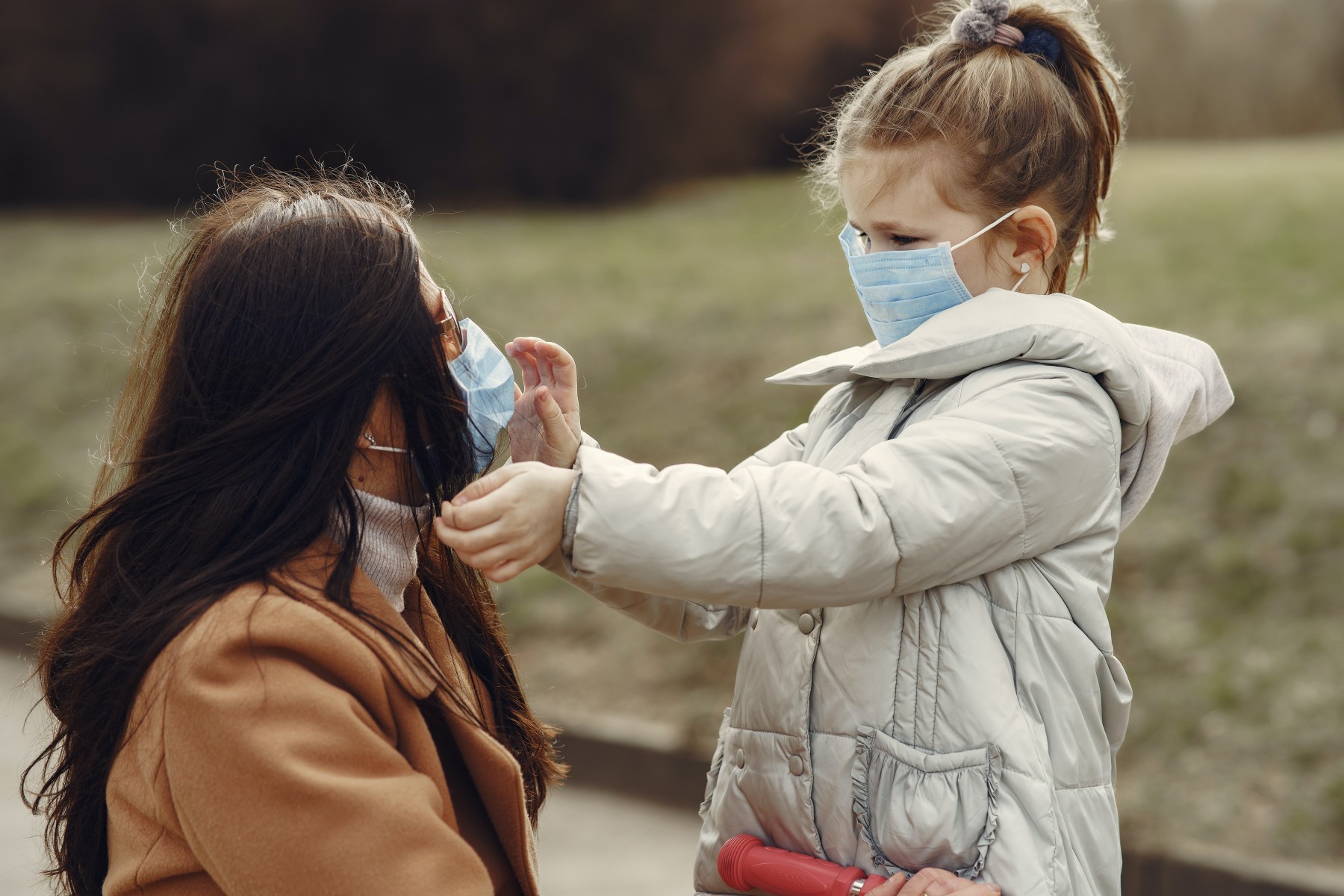Will Masks Affect My Child's Communication Skills?
Parents’ worries may run rampant during these pandemic times, but one thing they shouldn’t fret about is whether wearing masks will interfere with their children’s speech and language development.
So says Suzanne Bonifert, MC, CCC-SLP, speech-language program manager at Cook Children’s Medical Center, who adds that masks aren’t ideal, but they’re “helpful and keep disease at bay” for children and those around them.
“And that’s a good thing,” she says.
Since the COVID-19 pandemic began, some parents have expressed concerns that their younger children’s speech and language development could be stunted by masks covering the lower portion of faces, an area that provides additional cues about what’s being said and what’s not being said when humans communicate with one another.
But in the past year and a half, Bonifert and her team haven’t seen any overall change in children’s speech and language skill development, she says, nor in their comprehension of what’s being communicated to them.
“Our kids are able to communicate with us and with each other with masks on. Children are so adaptable and so resilient,” she says. “We should look to them more often to see how they handle things so much better. Sometimes it’s us as adults who worry so much.”
Adults have lots of different ways to effectively communicate with kids and facilitate comprehension, Bonifert says. Children of all ages instinctively pick up non-verbal cues from the upper half of the face, she says, such as eyes, eyebrows and forehead, as well as other methods humans use to express themselves, including tone of voice, body positioning and gestures.
Scientific research backs what Bonifert has found to be true. For instance, a pre-pandemic study published in the scientific journal Cognition in November 2012 examined how humans (age 3 to adult) processed facial cues when covered with face masks or sunglasses. The study concluded that children ages 3 to 8 showed no difference in deciphering emotions when viewing faces covered by face masks. Researchers also found the children, even when they could see the entire face, tended to focus on the eyes of the person communicating, according to the study.
Based on her own anecdotal evidence, babies are perfect examples of how that works, Bonifert says, adding that an adult wearing a surgical mask can pick up a baby, smile, speak in an animated voice, and the baby “will literally light up in front of you.”
“Because they see it in my eyes,” she says. “And I know they’re able to see what I’m doing by looking at the top half of my face. They also hear the intonation of my voice. They’re not understanding specific words and sentences, but they’re hearing that excitement in my voice and seeing it on my face, even though I’m partially covered with a mask. I’ve done this over and over and over.”
But, in general, babies and young children mostly see and hear their families without masks at home, which helps with their early speech and language development. Increasing that face-to-face interaction time—minus the distraction of screens—would benefit them, as well, Bonifert says.
When out of the house and wearing a mask, adults should use the same techniques practiced in public speaking while communicating with children, she says. Her tips for adults include:
- Articulate clearly so your words can be understood.
- Project your voice and increase the volume in case your voice sounds muffled behind a mask.
- Use facial expressions.
- Smile bigger than usual—it will show through your eyes.
- Make eye contact.
- Make sure you have their attention before speaking.
The latter tip—gaining children’s attention—is a skill “we encourage, in general, when working with kids to facilitate communication,” Bonifert says.
“It’s a key point. Mask or no mask, that’s always important, but especially with a mask. We need to make sure we have their attention, their bodies are positioned toward us, and we have good eye contact with them,” she says. “We talk about getting face-to-face with children—that’s really important.”
The children also pick up on these techniques and use them to communicate, Bonifert says.
“In particular, with typically developing children, when they’re wearing masks, they start to learn these skills, too. They learn ‘I just have to speak a little bit louder sometimes’ or ‘I can’t be turned away like this when we’re in math class because my teacher’s probably not going to hear me,’” she says.
For parents of children with developmental delays or disorders who may already face speech and/or language challenges, Bonifert suggests using window face masks, which have see-through plastic over the mouth area. Window face masks may help, for example, when adults need children to see the way their lips and tongues move while forming words, she says. The masks can be purchased online.
Overall, it’s important for parents to remember babies and young children have continued to progress with communication and comprehension skills despite their encounters with a mask-wearing society during the pandemic. While wearing face masks isn’t ideal, Bonifert says, parents shouldn’t be overly concerned about any long-term speech or language effects.
“Again, it’s not like we have had an influx of tons and tons of children who are not developing typically,” Bonifert says. “It just shows the resilience of the human body and brain, and how neurologically children can adapt.”

